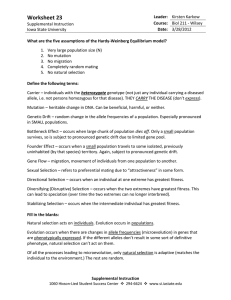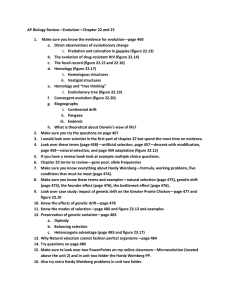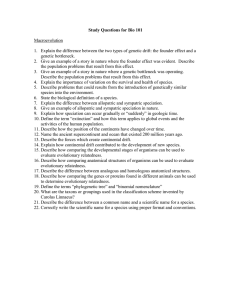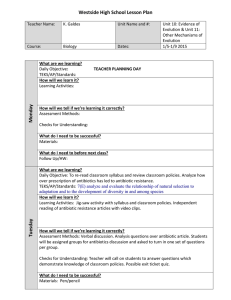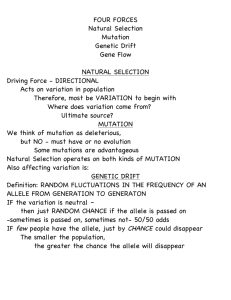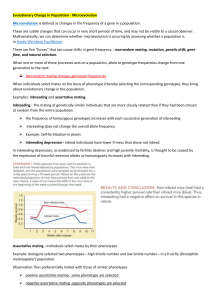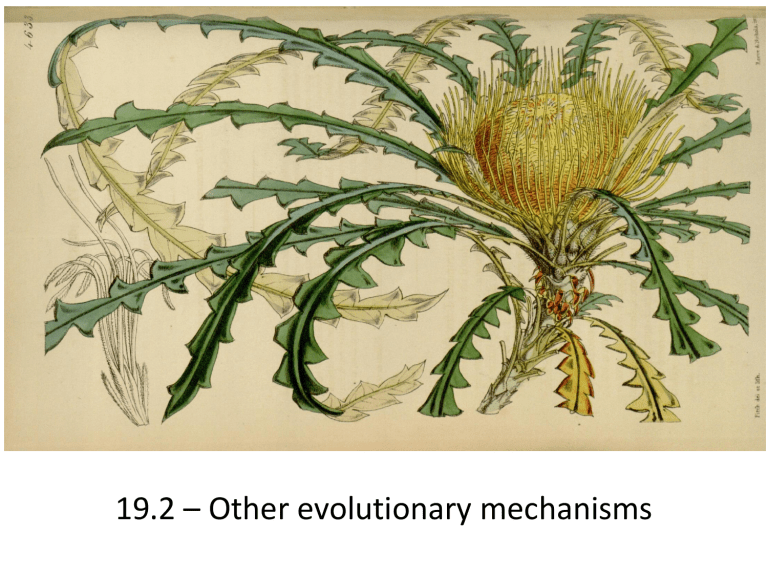
19.2 – Other evolutionary mechanisms Learning objectives • Know the non-adaptive evolutionary mechanisms and examples • Understand why genetic drift is more prevalent in small populations • Be able to analyze data and determine if a population is evolving, and what the mechanism is Natural Selection leads to Adaptations • Adaptation = a feature that has become common in a population by natural selection, because it provides some improved function, leading to increased fitness! • Examples : – a behavior or anatomical feature that allows escaping predators, – a protein or other compound with special physical/chemical properties, – an anatomical feature that allows an organism to access resources, etc. Non-adaptive evolutionary mechanisms • • • • Migration (gene flow) Mutation Genetic drift Non-random mating These mechanisms cause allele frequencies to change, but do not lead to adaptation! Migration is the movement of individuals from one population to another • If these individuals are reproducing, this leads to gene flow • Examples • Consequence – populations become more similar Mutation is rare, but is the only mechanism that increases genetic variation A change in the frequency of an allele due to the random effects of small population size is genetic drift • Bottleneck – an extreme example where the population falls to a few individuals • Founder effect/event - when a few individuals leave a population to start their own founder effects Discuss in your groups: Why is population size important when it comes to genetic drift? Population size and genetic drift Non-random mating Inbreeding depression – reduction in fitness caused by homozygosity of deleterious recessive mutations Hemophilia in the British Royal family
